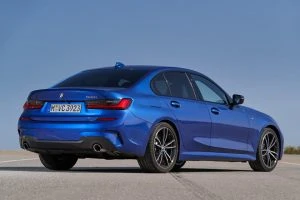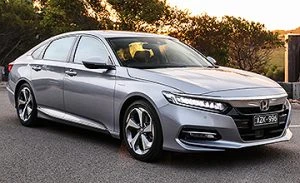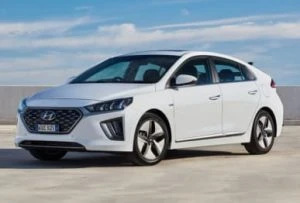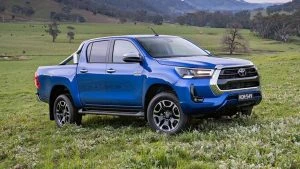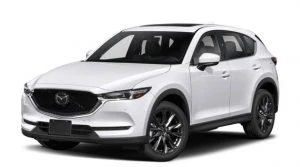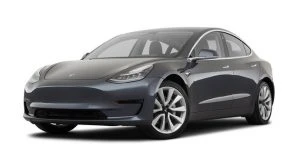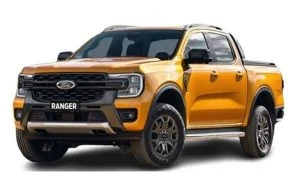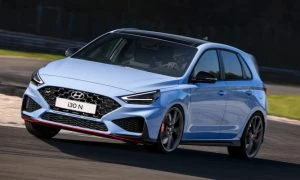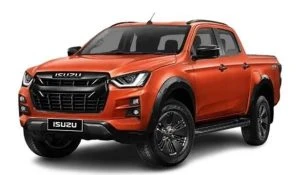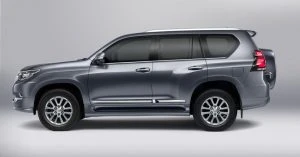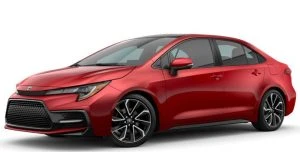April 20th, 2022 |
automotive design,
blog,
Buy A New Car,
Car Sales,
Electric Vehicles (EVs),
Environment,
Fueling your Car,
Hybrid Vehicles,
Makes and Models,
Manufacturer News,
New cars,
Sustainability/Green
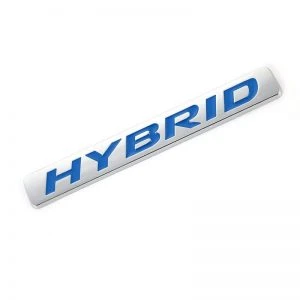
In-between stages can sometimes get tricky. The next set of sit-ups before truly hitting your peak fitness regime. That gap year before study, or the six months prior to the new job contract starting. What about the EV world? We’re not capable of running a full fleet of EV cars yet, but maybe there’s an in-between vehicle that ticks all the right boxes before we go fully electric.
The truth is that the new hybrid vehicles are the best cars for this moment in time. They deliver the very best low fuel consumption figures and will also try to run pure electric as much of the time as is practical or possible.
Hybrids are great vehicles, usually well-priced, thus perfect for softening the blow to the wallet – there are some hideously expensive EVs available. Most desirable new EVs have price tags that, for most of us, will be well beyond our budget. So what hybrid vehicles are on the market for reasonable money? How much will they set you back when you buy new? And what sort of fuel consumption can you expect? Let’s have a look and see…

BMW 330e Sedan Hybrid Sedan
Drive away from around $85k in your new BMW 330e Hybrid sedan, where a claimed combined fuel consumption of around 5.6 litres/100 km combined with 215 kW provides plenty of spirited driving (0-100 km/h in around 6 seconds). Comfort, safety and all the new technology is on-board this neat 3 Series Hybrid Sedan package. 375 litres of boot space is present.

Honda Accord VTi-LX Hybrid Sedan
Drive away in a new Honda Accord Hybrid for around $61k, and you get a wonderful 2.0-litre petrol and electronic combo that serves up 158 kW of power running through a 1-speed CVT FWD set-up. This is a very comfortable car with plenty of space in the cabin, and you get all the latest technology and safety. It is fun to drive, with the 0-100 km/h sprint taking around 8 seconds. Honda indicates that you can expect around 5.0 litres/100 km for a combined fuel consumption figure. 473 litres of boot space is present.

Honda HR-V e:HEV L
Wanting a new small SUV with Hybrid technology? Then Honda’s little HR-V is a beauty. Drive away in a new Honda HR-V e from around $45k, and it will boast a smooth 1.5-litre petrol and electronic combo that serves up 96 kW of power running through a 1-speed CVT FWD set-up. Honda suggests we can expect a combined fuel consumption of around 4.3 litres/100 km. 319 litres of boot space is present.

Hyundai IONIQ Hybrid Premium Fastback
Drive away from around $46k. With its neat little Fastback design, the 1.6-litre ULP engine combines with a small electric motor to put out a sprightly 104 kW of power. This Hybrid set-up runs a more conventional 6-speed automatic FWD, and it is a smooth, comfortable vehicle to drive. Undercutting competitors such as the Toyota Prius and Renault Zoe, Hyundai’s IONIQ comes with plenty of premium features like autonomous emergency braking, an 8-year battery warranty and an attractive capped-price servicing deal. The regular hybrid version is quoted at having a fuel consumption figure as low as 3.4 litres/100 km, while the plug-in version was quoted at an astonishing 1.1 litres/100 km. Real world figures will be a bit more, I’m sure, but. Boot space is 443 litres.
Be an in-betweener and gain some of the benefits. Take a look at the next blog list of Hybrid vehicles available (Kia-Merc).
Like a slow motion replay, the scene has been unfolding for some time. In fact, go back a couple of years and the writing was on the wall. Australians are obsessed with SUVs. But it’s not just here either, with many other countries following the trend, none more evident than the United States and China.
It has reached the point now where local SUV sales are far and away outperforming sedans, and have blown past 50% of all new car sales. On the one hand, the rise of commercial vehicles like utes has also helped to skew the numbers away from sedans, but the prominence of the SUV category is no statistical anomaly.
With such an evident trend appearing to be set in stone, it does raise questions over the future viability of the sedan format. In particular, will sedans still have a place in the market as SUV sales soar?

An evolving landscape
Cars have always been redefined by the technological progress that accompanies them. That doesn’t just extend to what’s under the bonnet either, nor what’s inside the cabin. It also extends to the shape of the body. We’ve seen an evolution as far as new formats like crossovers, liftbacks and many other identities.
In many respects, there is no reason to believe this won’t continue as means to continue fuelling the sedan market. Design changes may be subtle, but incorporating the feedback we’ve come to expect from those who prefer things like superior room, ride height, visibility and off-road versatility that comes with an SUV. Not to mention, with electrification and autonomy on the way, designs will inherently continue to transform, gradually shifting our taste in vehicles too.

The value proposition will dictate future sales
For now, sedans are still posting sales numbers that are nothing to sneeze at. Sure, they may be declining, but the choice for SUV models has risen astronomically to provide more options than ever before. Motorists’ preferences may have changed but in some ways, historical data may have been otherwise pointed to higher levels of SUV sales – and lower sedan sales – had drivers been afforded more choice at an earlier stage.
It is also a challenge that manufacturers should embrace. They will not only be faced with the task of streamlining their sedan range – as many have done already – but also going about reinvigorating a value proposition into the category to drive sales.
SUV sales may offer auto-makers fatter margins, however their higher prices and at-times polarising looks will still be a barrier to pushing sedans out of the market. So if sedans are then here to stay, car manufacturers must add value in the form of new technology, amenity, efficiency and performance to compete for the shrinking pool of buyers. And it’s many of these criteria that sedans have historically held the upper hand.

There are still a reasonable number of new cars being sold in Australia, when you can get them! For the second year running, new car sales figures have been heavily impacted by the COVID-19 pandemic. While the 2020 lockdowns stopped production and prevented sales, in 2021 it was really the global supply chain problems that caused the biggest headaches for ensuring manufacturers had all the bits to make up an entire car to sell. Most notably, it was the availability of semiconductors that caused the greatest complications, even to the point where all car manufacturers – it didn’t matter what brand – had to halt their production lines at various times.
Consumers have seen this effect playing out with the low stock of new cars at dealerships across the country, as well as much higher prices for used vehicles. Getting a handle on the new cars that people have actually bought has been tricky at times, but we can now give you an update on the 10 best-selling cars in Australia for the March 2022 sales results.
While the Toyota Hilux still keeps its position as Australia’s best-selling new car (and favourite ute overall), overall new car sales for March 2022 have stayed relatively stable across the board and across Australia. Data from the Federal Chamber of Automotive Industries (FCAI) has unveiled an overall monthly sale of 101,233 units for new vehicle sales across Australia for March. That’s still a fair few!
Several favourite vehicles remain at the top of the list, including 4 Toyota models (Hilux, RAV4, Prado and Corolla) making the top 10. An interesting bump in sales was seen with the number of Tesla Model 3 cars being sold. There were enough Tesla Model 3 sales to see it being Australia’s best-selling electric vehicle (EV) brand as well as making the top 10.
Australia’s top 10 best-selling cars for March 2022 were:

Number 1, Toyota Hilux

Number 2, Toyota RAV4

Number 3, Mitsubishi Triton

Number 4, Mazda CX-5

Number 5, Tesla Model 3

Number 6, Ford Ranger

Number 7, Hyundai i30

Number 8, Isuzu D Max

Number 9, Toyota Prado

Number 10, Toyota Corolla
Consumer inquiries and demand for new cars remains strong in Australia, though manufacturers are working hard to match this demand with the actual supply of products, particularly as they continue to recover from all the COVID-19 upheaval and shutdowns and the ongoing global semiconductor shortage.
FCAI Chief Executive Tony Weber suggests that Australians are purchasing vehicles with zero- and low-emissions in greater numbers. This purchasing also includes more hybrid vehicles being sold.
Stumping up a deposit for a new vehicle can be a difficult prospect for many new car buyers, yet alone if they are trying to scrape together enough funds for it to be a large deposit.
So does it really matter then if you are unable to put down a large deposit for a new car? Should you hold off on your decision to purchase a car until you are in a position where you have enough funds for a large deposit?
Why put forward a large deposit?
As with any other instance where you might be forking out for a big purchase, the more money you can set aside, the smaller the amount of funds you borrow from a financier.
If you are in a position where you can put forward a large deposit then you will reduce the size of your loan. This can afford you several potential benefits, providing of course that you can keep up with the commitments of the loan. These benefits include:
- A potentially lower interest rate on the loan
- A reduction in overall interest costs across the life of the loan
- Lower monthly repayment obligations across the life of the loan
- The ability to repay the loan in a shorter timeframe

What should I consider before putting forward a large deposit?
Although the incentives in putting forward a large deposit might seem compelling, if you are going to do so, then you need to be particularly attentive to certain circumstances.
First things first, you need to understand just how much you can afford to set aside and commit towards a deposit. Remember, you will have other financial obligations in your life, and your personal circumstances could change at any minute. It is always wise to be prepared for any risk, including the prospect that you lose your job or have sudden emergency expenses arise.
One of the things you will need to take into consideration is whether putting forward a large deposit now could leave you with less cash to meet your repayments. If for any reason you find that you are unable to keep up with your repayment schedule, this could have long-term ramifications for your credit history.
What’s more, pursuing low interest rates shouldn’t necessarily be your end goal. Just because you can’t save up enough funds to attain the lowest rate available, that doesn’t mean you should hold off on purchasing a vehicle, as not only could you miss out on a time-sensitive deal, it could even have other implications on your day-to-day livelihood.


